Case 1
- Contextualising the Modern World

Adolf Hitler, My struggle. London: The Paternoster Library (Hurst & Blackett), 1937. Private Collection
On 30 January 1933, Adolf Hitler (1889–1945) was sworn in as chancellor of Germany and his National Socialist German Workers’ Party (Nazis) came to power. In March 1936, his troops occupied the demilitarized zone of the Rhineland, violating the Treaty of Versailles. On 29 September 1938, the Munich Pact was signed that permitted Germany to annex Sudetenland, western Czechoslovakia. This action produced English Prime Minister Neville Chamberlain’s classic ‘peace with honour. I believe it is peace for our time.’ On 1 September 1939, Hitler’s army invaded Poland, an action that resulted in Britain and France declaring war on Germany. His plans and ideologies were first revealed in his Mein Kampf (My Struggle), published in 1925 and 1926. By 1933, this work had sold well over 1 million copies. On display is an early English translation.

Adolf Hitler, My struggle. London: The Paternoster Library (Hurst & Blackett), 1937. Private Collection
Open image in new window
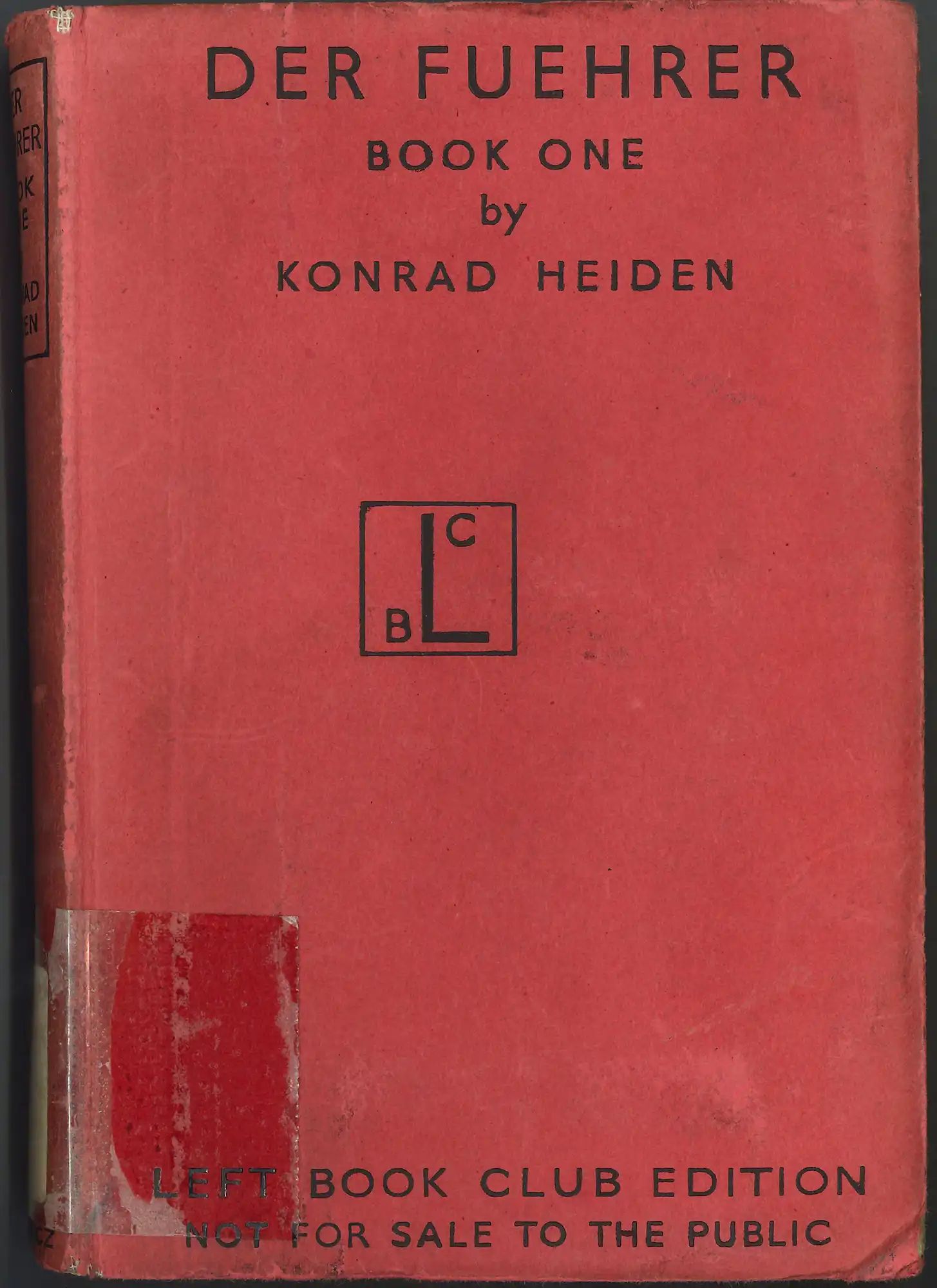
Konrad Heiden, Der Fuehrer. Book I and II. (1944). LBC 943.086 HEI
On 27 February 1933, the Reichstag fire occurred. Herman Göring, Hitler’s henchman, blamed the communists for it, setting in motion, one day later, the introduction of the Reichstag Fire Decree which suspended basic rights and allowed detention without trial. The German Communist Party was suppressed, and many members arrested. This was just one of the many injustices Hitler introduced. Journalist Konrad Heiden (1901–1966) was very critical of Hitler’s Nazism in Germany and had to flee the country. Written in exile, his biography Der Führer – Hitler’s Rise to Power (1944) was first released by Houghton Mifflin in 1944 and reprinted by Victor Gollancz’s Left Book Club.
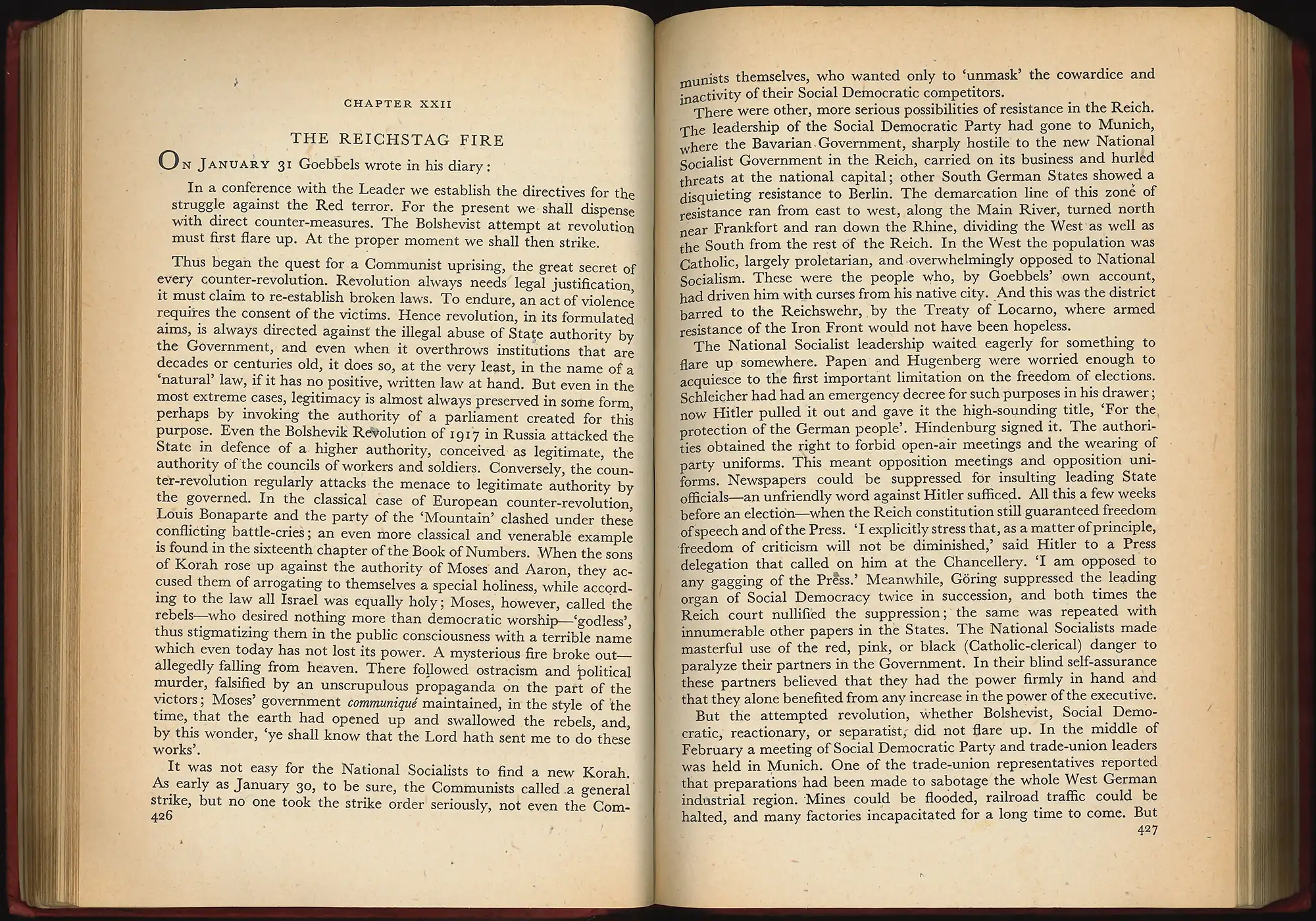
Konrad Heiden, Der Fuehrer. Book I and II. (1944). LBC 943.086 HEI
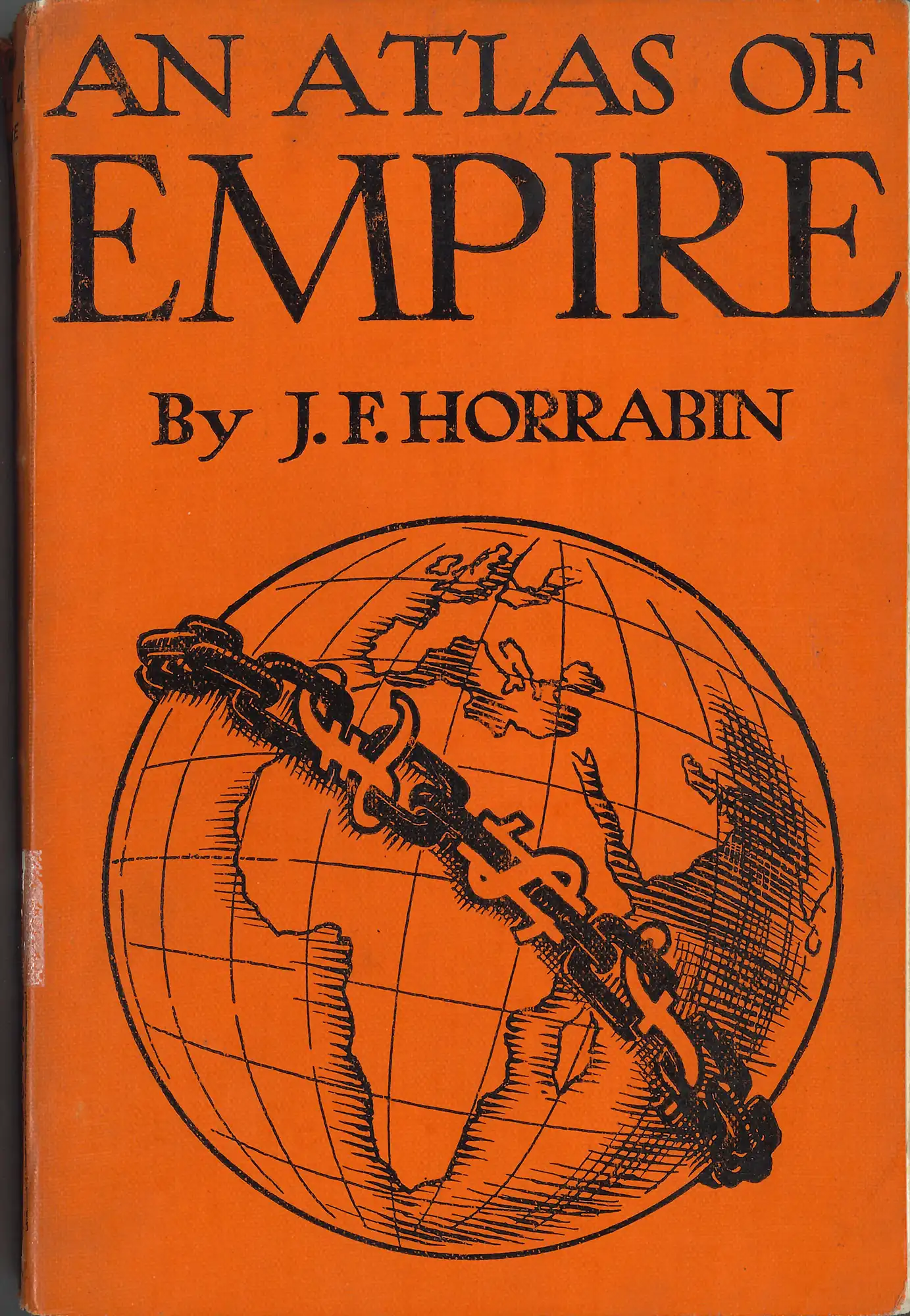
J. F. Horrabin, An atlas of empire. (1937). LBC 911 HOR
J. ‘Frank’ Horrabin (1884–1962) was an English socialist, a one-time Communist radical writer and a Labour MP. He was also a cartoonist for the Daily News. His drawing skills are evident in these two general books on world geography, published by LBC. The allied fascist states of Germany and Italy – ‘The Berlin-Rome Axis’ – are depicted and Horrabin makes mention of Spain, who at the time of this reprinted edition (1938) was in the throes of civil war with Francisco Franco (1892-1975), head of the Nationalist Party, then launching the Aragon Offensive.
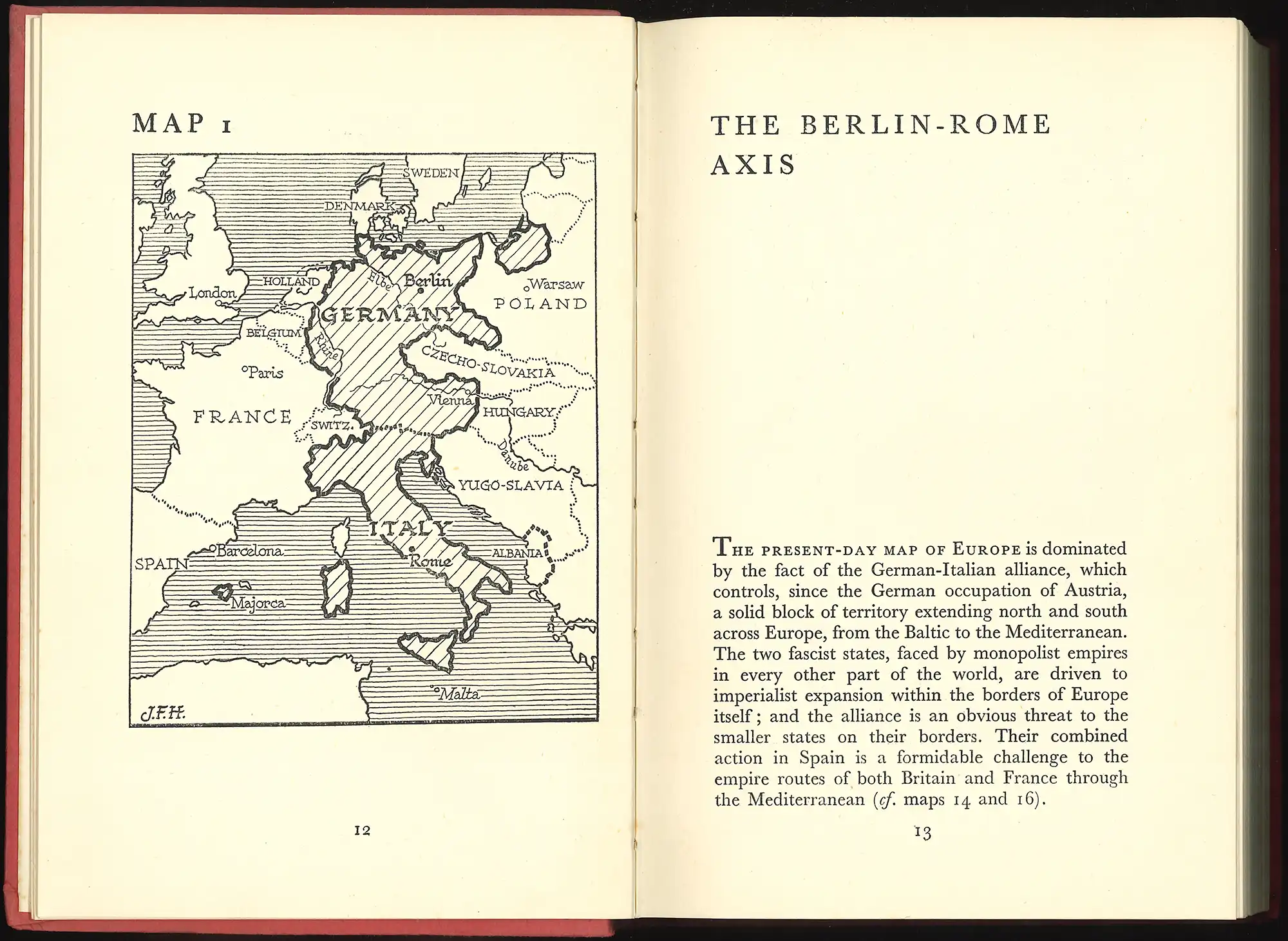
J. F. Horrabin, An atlas of current affairs. (1938). LBC 911 HOR
J. ‘Frank’ Horrabin (1884–1962) was an English socialist, a one-time Communist radical writer and a Labour MP. He was also a cartoonist for the Daily News. His drawing skills are evident in these two general books on world geography, published by LBC. The allied fascist states of Germany and Italy – ‘The Berlin-Rome Axis’ – are depicted and Horrabin makes mention of Spain, who at the time of this reprinted edition (1938) was in the throes of civil war with Francisco Franco (1892-1975), head of the Nationalist Party, then launching the Aragon Offensive.
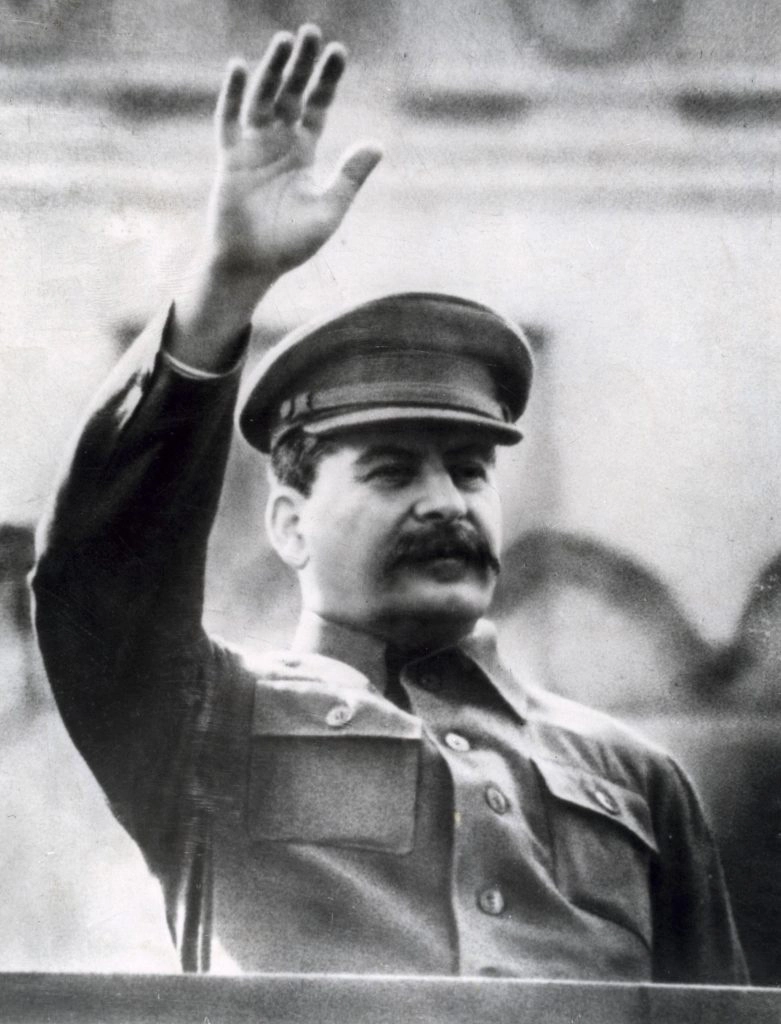
Joseph Stalin (1878–1953), photograph
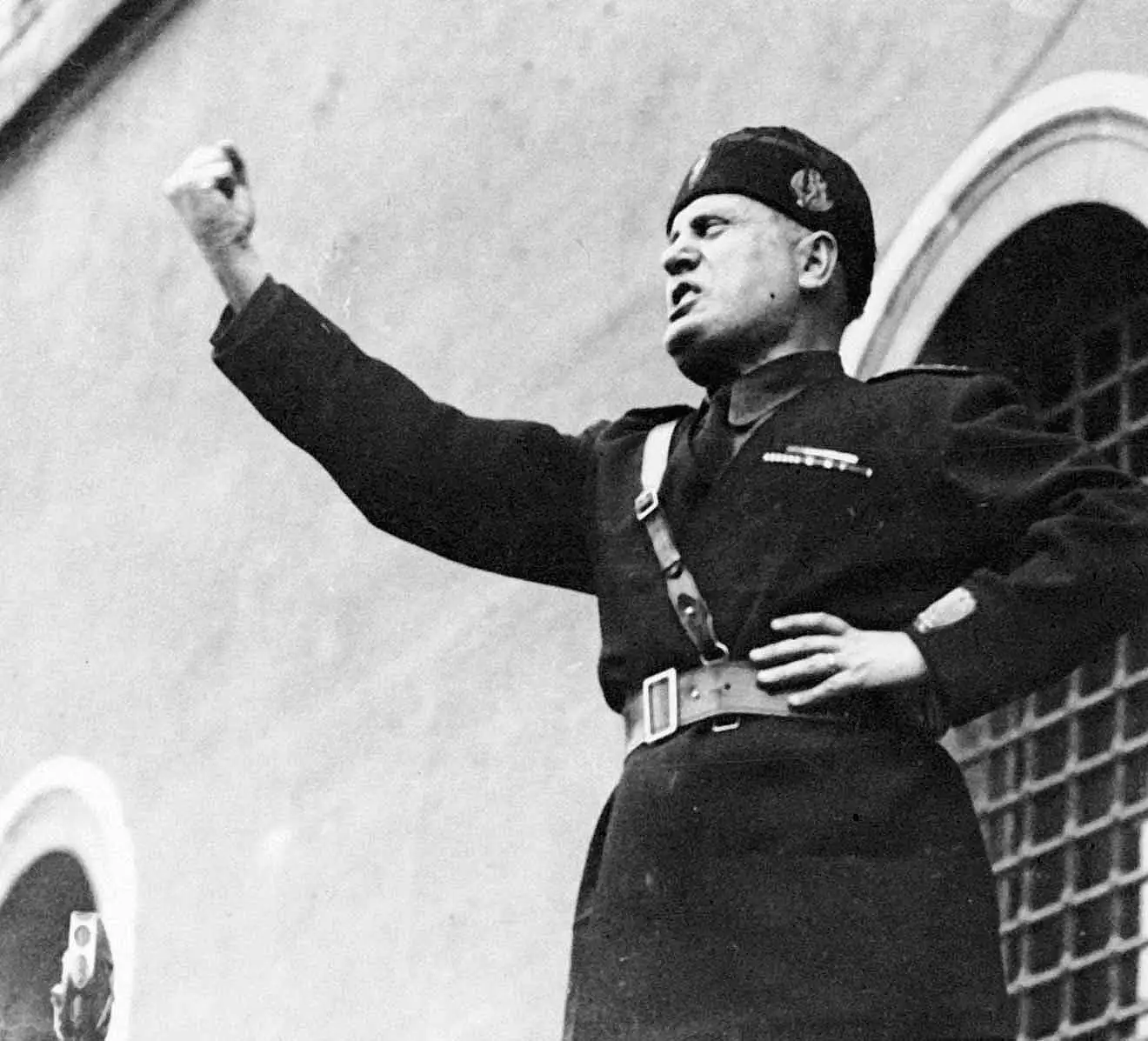
Benito Mussolini (1883–1945), photograph
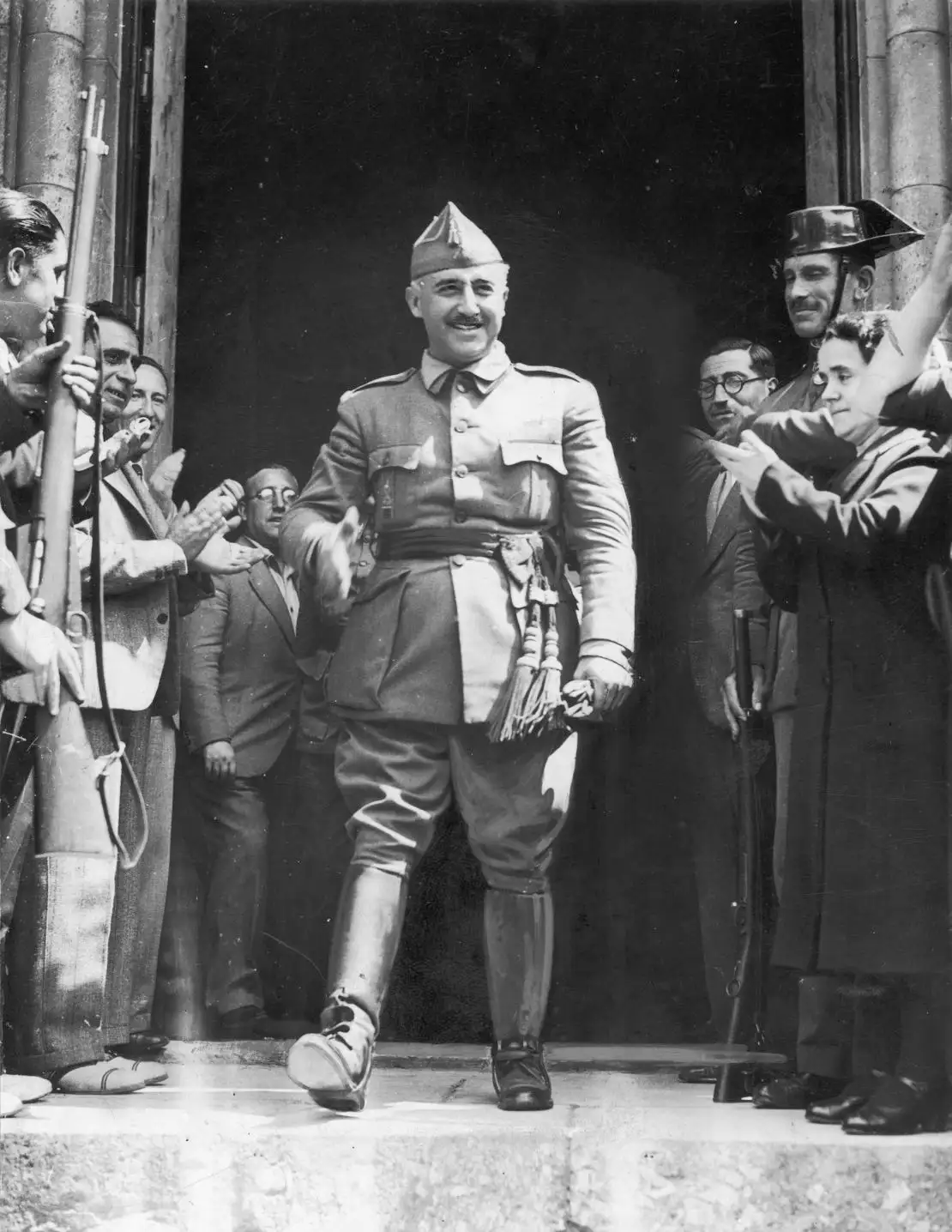
Francisco Franco (1892–1975), photograph
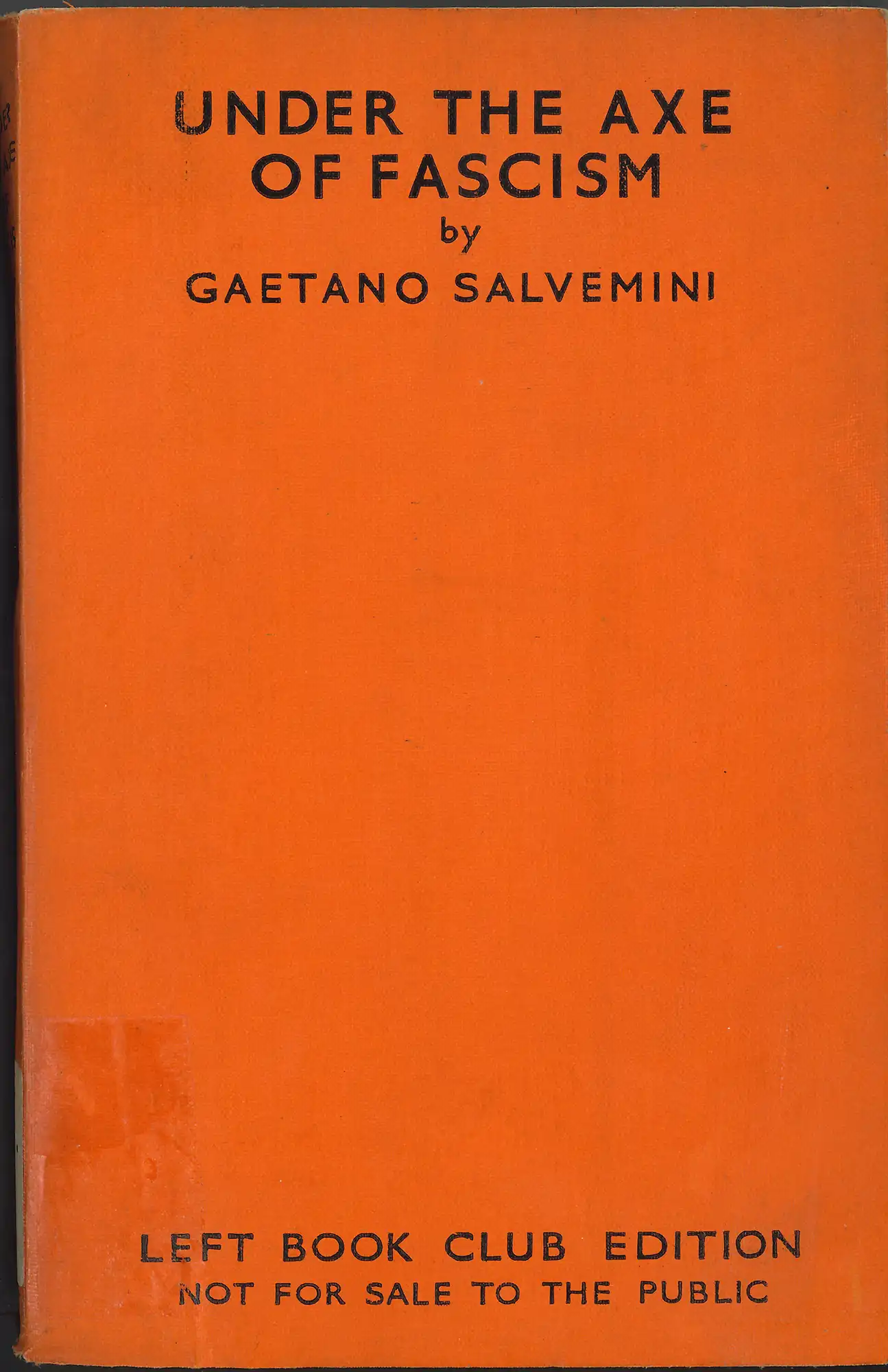
Gaetano Salvemini, Under the axe of fascism. (1936). LBC 945.09 SAL
Gaetano Salvemini (1873-1957) was a historian who was forced to flee Italy because of his strong dislike of the policies introduced by Benito Mussolini (1883–1945), the Italian dictator who founded the National Fascist Party (PNF) in 1922. Salvemini’s Under the axe of fascism was grounded in information gathered from Italian workers, peasants, and numerous professional classes. To him, the real achievements of the authoritarian regime were political deception, fiscal jiggery, economic depression, and economic decline. Tagged as the LBC ‘Book of the Month’ for October 1936, it was so popular that Gollancz reprinted it four times in that year.
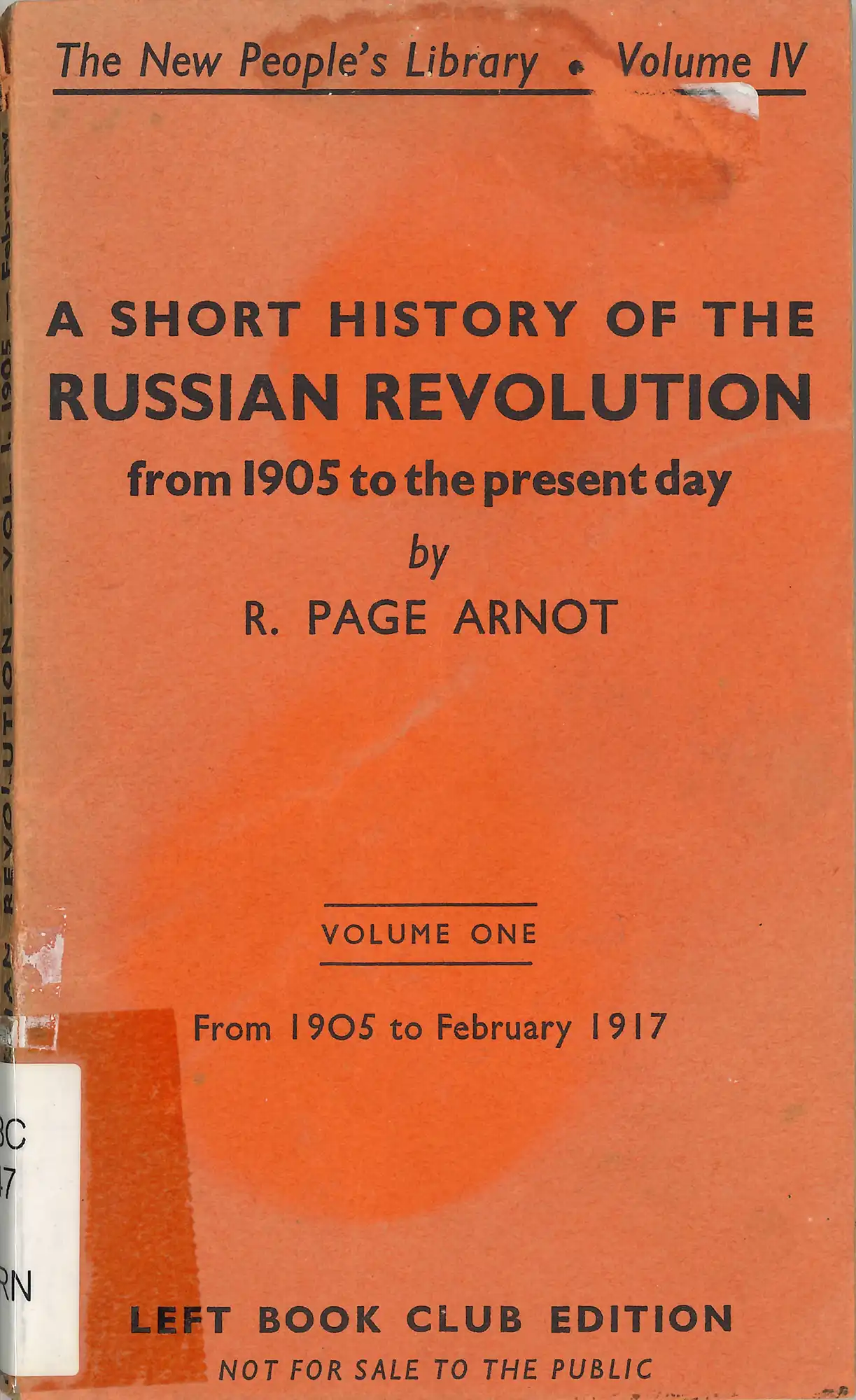
R. Page Arnot, A short history of the Russian Revolution. (1937). LBC 947 ARN
Victor Gollancz was so pro-Soviet that he chose Joseph Stalin (1878-1953) as ‘Man of the Year’ for 1937, maintaining that he was ‘safely guiding Russia on the road to a society in which there will be no exploitation’. Indeed, for Gollancz, no-one could say anything bad about Stalin, the leader of the Soviet Union from 1924 to 1953. Gollancz no doubt felt that the reputation of the LBC was safe with Robin Page Arnot’s succinct history of the Russian Revolution. Arnot (1890-1986) was a foundation member of the Communist Party in Great Britain and an expert on the history of British mineworkers.









